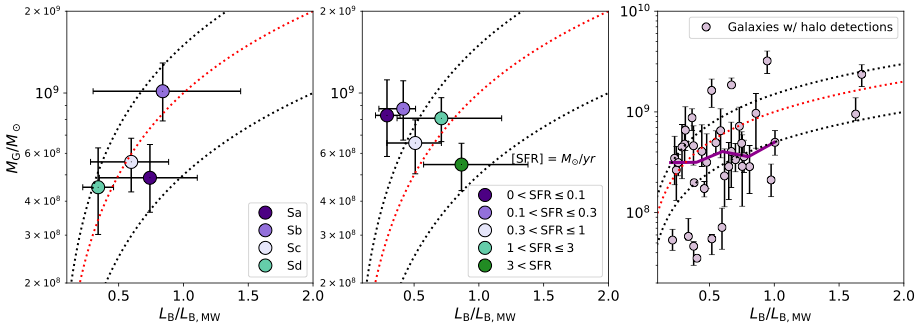In a previous blog post I gushed about the wonderful new JWST data on NGC 891, an edge-on galaxy with an ultraviolet halo. This week I’ll talk about this paper:
Illuminating the Incidence of Extraplanar Dust Using Ultraviolet Reflection Nebulae with GALEX
[html]
The authors use archival GALEX data to look for ultraviolet light from well above and below the plane. One of the authors has already done so with H-alpha, the emission line of ionized hydrogen. The idea is to look of blue light tracing star-formation can be seen well away from the disk of the galaxy seen edge-on.

This is important because we think there is no star-formation there. So if we see the blue or ultraviolet light there, it must have reflected off something: high latitude dust clouds. Also called cirrus or galactic cirrus. And apart from a lot of paper on NgC 891 (including a few I’m involved in) there isn’t a lot of evidence of galactic cirrus in other galaxies.
This is why this is a nice and clever paper. They collected all the edge-on galaxies for which there was GALEX data, examined them all individually and found 7% have this extra-planar UV halo. Earlier authors [] also found similar incidence rates. But GALEX is not very high resolution data so it’s hard to tell. In this paper, they also stacked all the data to look for a UV halo. The authors conclude the scatter off cirrus is much more common than 7% and there is UV light coming from well above and below disks.
They relate this to mass and star-formation rate of the galaxies here:

This figure above shows the absolute star-formation rate, I would have asked for a relative (specific) star-formation rate as well. Do smaller galaxies with relatively more star-formation produce more cirrus?
The authors link the mass, star-formation and the amount of gas extra-planar in this cirrus.

Unfortunately, this will be it until we get more ultraviolet imaging. Maybe with SWIFT (not the singer) or a new NASA mission UVEX. The latter is set to observe the whole sky, deeper and in high resolution. That will give us the kind of data one can use to study the galactic cirrus in much more detail.
Ok so why do we care again about galactic cirrus? because this hints at a self-sustaining refueling mechanism in disk galaxies. The cirrus material is blown out, the metals and dust in that material helps cool hot halo gas and it all rains back down on the disk of the galaxy, triggering new star-formation!
And it is apparently pretty common. Maybe this is how disk galaxies get (much? Most) of their refueling!
No comments:
Post a Comment